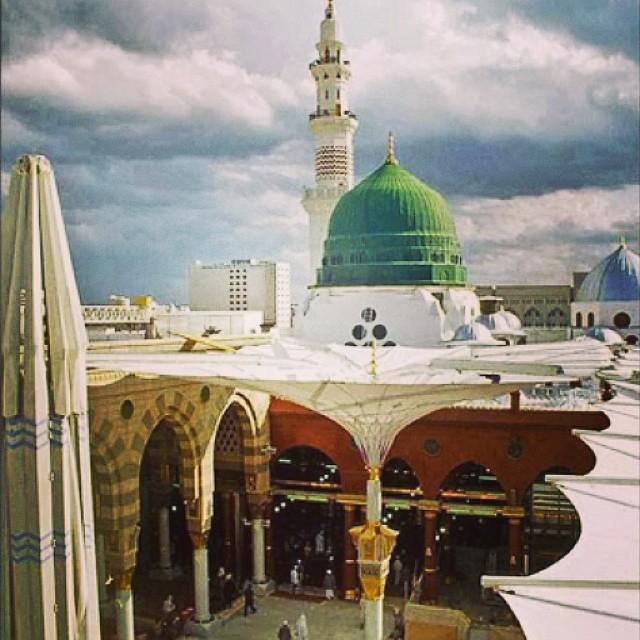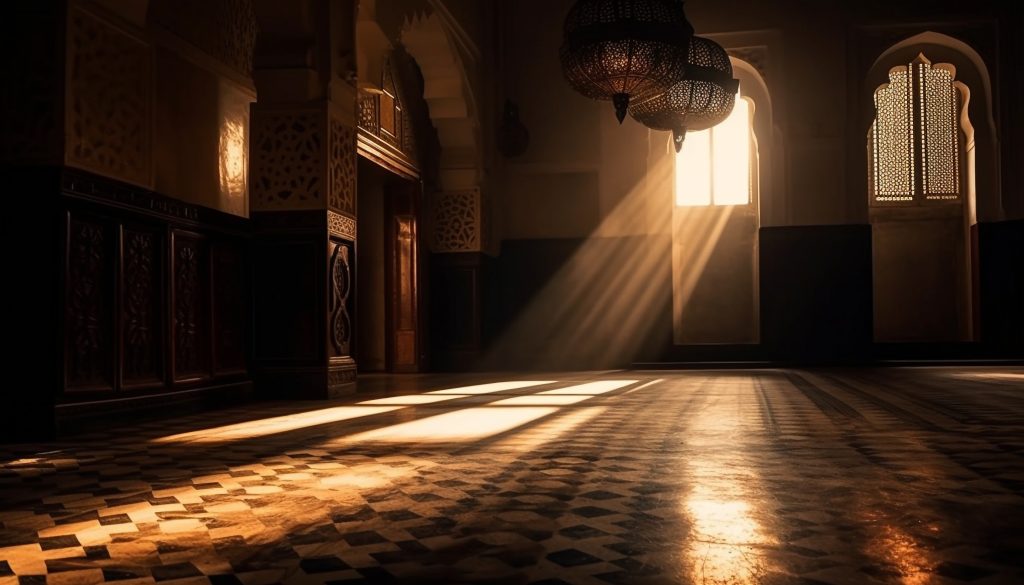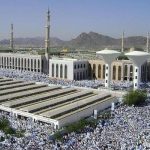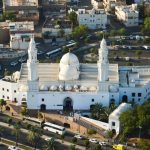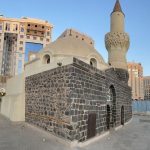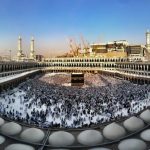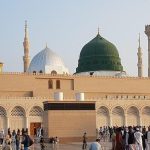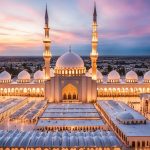Introduction: Unveiling the Essence of Arabia
The Arabian Peninsula is not merely a geographical entity; it is a cradle of civilization and the birthplace of Islam. To understand its historical significance, one must first grasp the profound influence of its geography. This vast region, known for its harsh landscapes and resilient inhabitants, has shaped not only the character of its people but also the trajectory of global history. As you explore the intricate details of this land, we at Umrah International provide essential services that facilitate your journey to the holy cities of Makkah and Medina, ensuring a spiritually enriching experience amidst the stunning backdrop of Arabian geography.
Chapter 1: The Heart of Arabia
1.1 A Geological Overview
The Arabian Peninsula, the world’s largest peninsula, spans approximately 1.2 million square miles. Surrounded by the Persian Gulf to the east, the Arabian Sea to the south, and the Red Sea to the west, it forms a unique quadrilateral shape that is both vast and varied. The topography ranges from jagged mountains to rolling sand dunes, reflecting a rich tapestry of geological history.
1.2 The Inhabitability of Arabia
Although often perceived as an inhospitable wilderness, Arabia boasts a surprising variety of landscapes. Beyond the iconic deserts, the region features fertile valleys, lush oases, and towering mountains, each playing a crucial role in the lives of its inhabitants. The presence of water, however scarce, has historically dictated settlement patterns and agricultural practices.
Chapter 2: The Diverse Terrain of Arabia
2.1 The Sands and Dunes
Contrary to the misconception that Arabia is solely a land of endless sand, it comprises diverse terrains. From towering dunes that can exceed 150 meters to flat, rocky expanses, the landscape is a marvel of natural artistry. Wind patterns create ever-changing shapes, offering a glimpse into nature’s perpetual cycle of creation and destruction.
2.2 Mountains and Plateaus
The western regions are dominated by majestic mountain ranges, such as the Hijaz and Asir mountains. These highlands not only provide a cooler climate but also significant agricultural opportunities, allowing for the cultivation of various crops. The contrast between the mountainous regions and the arid deserts is stark yet beautiful.
2.3 Oases: Life in the Desert
Oases serve as lifelines in the desert, supporting settlements and agriculture. The most famous, Makkah, owes its existence to the Zamzam well, a source of life that attracted settlers and became central to Islamic history. Understanding the role of oases in Arabian ecology is crucial to appreciating the region’s historical development.
Chapter 3: Climate and Weather Patterns
3.1 The Hot Desert Climate
The Arabian climate is characterized by extreme temperatures, with summer highs reaching up to 130 degrees Fahrenheit. Rainfall is scarce, averaging only four inches per year, except in the southwestern regions, which benefit from monsoon rains. This climate has profoundly influenced the lifestyle and culture of the Arab people.
3.2 Seasonal Changes and Their Impact
Seasonal changes in Arabia are subtle yet impactful. The brief winter brings cooler temperatures, allowing for a reprieve from the oppressive heat. Understanding these seasonal variations is essential for planning travels, especially for pilgrims visiting during Umrah.
Chapter 4: The Political Landscape of Arabia
4.1 Modern Political Divisions
The Arabian Peninsula is home to seven distinct political entities:
- The Kingdom of Saudi Arabia: Spanning 850,000 square miles, it is the largest and most significant state, housing the holy cities of Makkah and Medina.
- The Republic of Yemen: Rich in fertility and history, Yemen is known for its unique landscapes and cultural heritage.
- The Sultanate of Oman: A blend of tradition and modernity, Oman boasts stunning coastlines and mountainous regions.
- The United Arab Emirates: A federation of seven emirates, known for its rapid modernization and economic growth.
- The State of Qatar: A small but wealthy nation, Qatar is notable for its cultural contributions and global influence.
- The State of Bahrain: Comprising several islands, Bahrain has a rich history as a trading hub.
- The State of Kuwait: Known for its oil wealth and strategic location, Kuwait is a vital player in the region.
4.2 Cultural and Historical Significance
Each political unit has its own unique history and cultural identity, contributing to the rich tapestry of Arabian heritage. Understanding these divisions is essential for anyone looking to explore the region’s past and present.
Chapter 5: The Flora and Fauna of Arabia
5.1 Sparse Vegetation
The vegetation in Arabia is largely dictated by the arid climate. Despite the challenging conditions, certain plants, such as date palms and acacia trees, have adapted to thrive. The date palm, in particular, holds significant cultural and economic importance, serving as a staple food source.
5.2 The Role of Animals
Historically, the camel has been indispensable for survival in the desert. However, with modernization, the reliance on camels has waned, giving way to motorized transport. Understanding the historical significance of these animals provides insight into the lifestyle of the Arab people.
Chapter 6: Water as a Vital Resource
6.1 The Importance of Water
Water, or the lack thereof, has shaped Arabian history profoundly. The discovery of the Zamzam well was pivotal for Makkah’s establishment, demonstrating how essential water resources are for settlement and survival.
6.2 Modern Innovations in Water Management
With the advent of oil wealth, modern technologies have been introduced to address water scarcity. Desalination plants and advanced irrigation techniques are transforming the arid landscape, making it possible to cultivate previously barren lands.
Chapter 7: Economic Transformation and Oil
7.1 The Discovery of Oil
The discovery of vast oil reserves in the early 20th century revolutionized the Arabian Peninsula. From poverty and isolation, the region transformed into a center of wealth and global influence, altering the fabric of society.
7.2 The Impact of Oil Wealth
Oil wealth has facilitated rapid economic development and modernization. Cities have expanded, infrastructure has improved, and the standard of living has drastically changed. However, this rapid change also poses challenges, such as environmental concerns and cultural shifts.
Chapter 8: The Cultural Mosaic of Arabia
8.1 Diverse Traditions and Heritage
Arabia is a melting pot of cultures, traditions, and languages. The rich history of trade and interaction has fostered a unique cultural identity that continues to evolve.
8.2 The Influence of Islam
As the birthplace of Islam, the Arabian Peninsula holds immense religious significance. The cities of Makkah and Medina are pilgrimage destinations for millions of Muslims worldwide, making them central to the Islamic faith.
Conclusion: Embracing the Spirit of Arabia
In conclusion, the geography of Arabia is not merely a backdrop for historical events; it is a living entity that has shaped the character and culture of its inhabitants. From the majestic mountains to the rolling dunes, the diverse landscapes reflect the resilience and adaptability of the Arab people. At Umrah International, we invite you to explore this fascinating region, offering a range of services to enhance your pilgrimage experience. Whether you’re wandering the historic streets of Makkah or reflecting in the serene landscapes of Medina, the spirit of Arabia awaits to enrich your journey.
This blog serves as a comprehensive guide to the geography of Arabia, its significance in shaping history, and its profound impact on the culture and identity of its people. By understanding this rich landscape, travelers can better appreciate their journey through one of the most historically and spiritually significant regions in the world.


